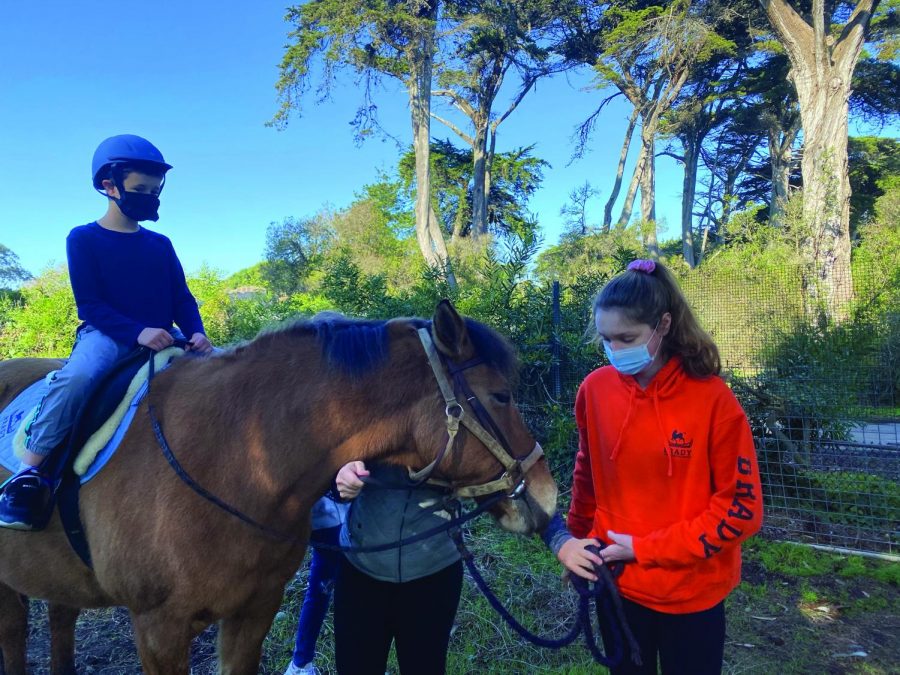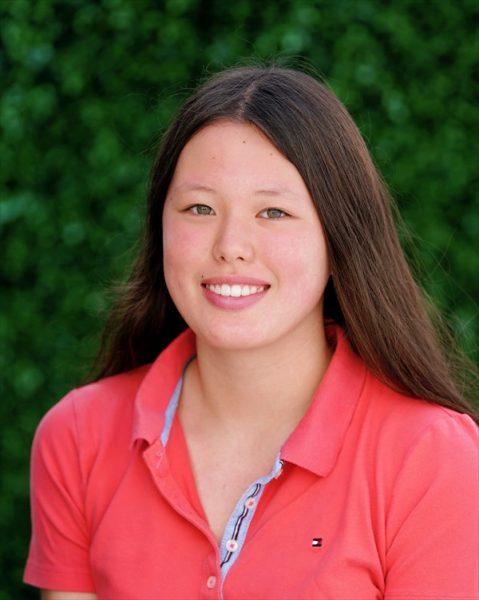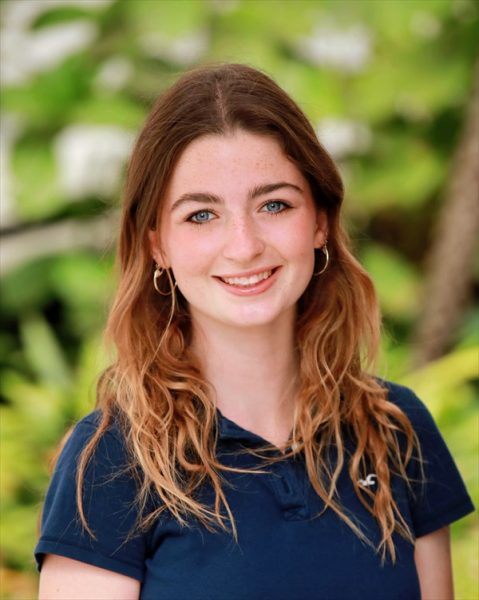Get on your high horse
Volunteers lead horses, help children ride
Sophomore Natalie Posner holds the horse as Gavin Scola, 4, waits for riding instruction from director Sarah Meakin at the James S. Brady Therapeutic Riding Program. Volunteers help children learn to ride horses as a form of physical and emotional therapy.
February 21, 2021
On a Saturday morning, sophomore Natalie Posner takes a deep breath through her mask as she briskly walks on a dirt path surrounded by eucalyptus trees and alongside a horse and its 4-year-old rider.
Posner volunteers with the James S. Brady Therapeutic Riding Program, a non-profit that serves children who have a physical and cognitive diagnosis such as cerebral palsy or autism, or who have suffered displacement due to finances or domestic violence.
The program is named after James S. Brady, press secretary for President Ronald Regan, who became disabled after a near-fatal shot during an assassination attempt on the president. Brady also turned to horseback riding for physical therapy.
“My favorite part about Brady Riding is making connections with clients and horses,” Posner said. “I really love seeing how kids are improving and it makes me happy that I can be part of it.”
Volunteers lead the horse, help prepare and clean after the sessions, walk alongside children while they are riding, and sanitize the helmets and saddles after use. Horses can be therapeutic for volunteers as well the clients while they spend time cleaning, walking and handling horses.
“The horse is applicable globally to the human, which means it’s not only beneficial to the physical, it’s beneficial to the emotional, and to the mental health of a human,” Sarah Meakin, director of Brady Therapeutic Riding, said. “It’s beneficial for the human, whether it’s an adult or a child.”
Horseback riding can be an emotional and physical outlet for children with disabilities and can establish a sense of balance and peace, according to Meakin. Riding evokes a relaxed state in children and makes them to focus on rhythmic breathing and promotes blood circulation throughout the body.
“Gavin has a lot of sensory processing things, it’s a part of his autism and sensory processing disorder but he’s always moving,” Gina Scola, whose son rides at Brady, said. “He does a lot of jumping and flapping, but you can observe when he’s on the horse he is a completely different kid.”
Since many clients are unable to attend school in-person or other therapeutic programs, Brady Riding can establish a sense of balance and security in a child’s and family’s lives, according to Meakin.
“It’s actually been a lifesaver because we don’t do anything else,” Scola said. “I love the people, they are so good with my son. He’s been coming here since he was 4.”
The program was founded by Hue Meakin in 1987 and works with 4 to 18 year old children from the Bay Area. Brady Riding partnered with the San Francisco Zoo in 2019, where it is currently located.
“I enjoy seeing the impact that my time has made on people,” Posner said. “When the clients are noticeably happier and are excited to see me each week, it feels like I’m really making a difference in some people’s lives.”










